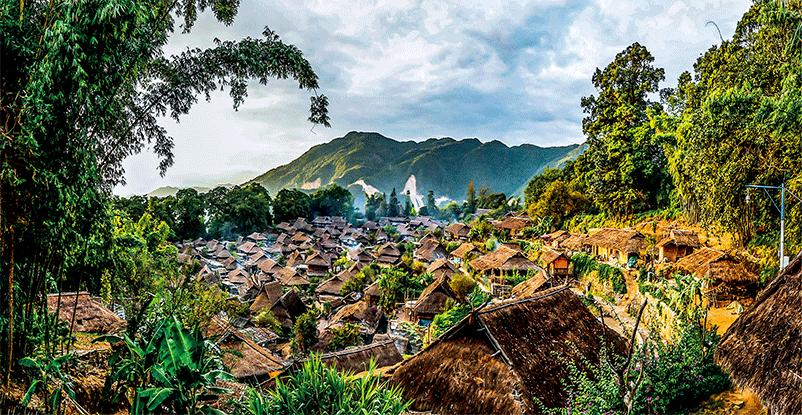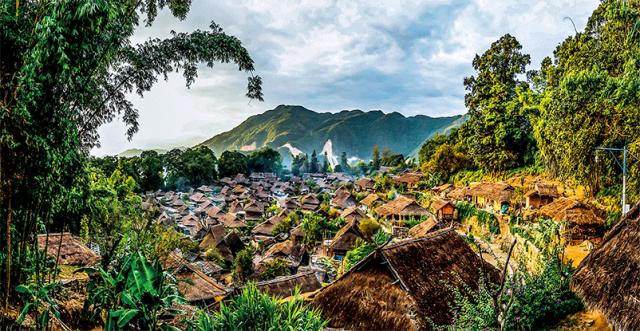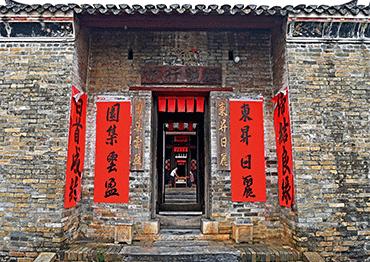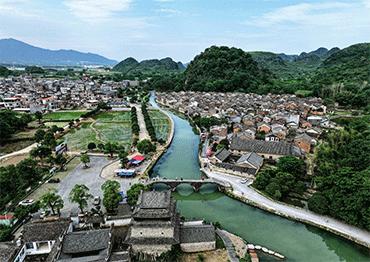rom 2000 to 2010, around 900,000 traditional villages disappeared in China. This prompted a survey of traditional villages led by China’s cultural, development and financial authorities, and the first batch of listed traditional villages was selected in December 2012. Up to 2023, there were six batches of traditional villages officially listed.
In 2013, under the auspices of the Chinese Folk Literature and Art Association, the Research Center for the Protection and Development of Chinese Traditional Villages was established at Tianjin University as an independent research institution.
With its remit to research traditional villages, the center aims to promote and implement the protection and development of traditional villages.
Pu Jiao, a professor at Tianjin University, has focused her research since 2007 on intangible cultural heritage, such as wood-block prints. In June 2013, she was appointed deputy director of the center. Pu talked to NewsChina in late 2024 about some of the issues involved in ensuring effective preservation of traditional villages and the cultural heritage embedded in them.
NewsChina: Can you tell us how the approach toward protecting traditional villages has developed?
Pu Jiao: Traditional villages used to be called ancient villages. Many people had gotten used to calling them ancient villages or traditional ancient villages. In September 2012, at the first meeting of the Expert Committee on the Protection and Development of Traditional Villages, Feng Jicai (director of the research center) and other experts proposed changing the descriptor “ancient village” to “traditional village.” In fact, this came out of consideration of the value of traditional villages. “Ancient” is a term referring only to a dimension of time, while “traditional” is a term that is far more wide-reaching, and it can better express the recognition of value.
Dong Hongmei, director of the Assistance Office of the Ministry of Housing and Urban-Rural Development, said that traditional villages should preserve physical objects as well as continue to allow local people to live in them. The ancient outer appearance should be protected, but it should have modern indoor facilities for comfortable living. As a combined unit for both farming production and living, traditional villages are not only the carrier of China’s exceptional farming culture, but also a cradle for China’s outstanding traditional culture. In addition to retaining cultural inheritance, it is more important to create better living conditions and development opportunities for regular people. Preserving them is the only way to attract locals to stay. If a village is an empty shell with no one living in it, it goes completely against the original intention of protecting it.
NC: People in traditional villages want to enjoy modern life like everyone else. How do we solve the contradiction between preservation and modernization?
PJ: First, we should figure out what the village can provide to people living in it, and what the people can contribute to the village. This may not be a unilateral output or nurturing and demanding relationship, but it needs constant mutual nurturing from both sides. Traditional villages are carriers for history and the present. The history embedded in them is multi-layered, so diverse cultures can generate dialogues among each other. As time passes, traditional ways of thinking, ways of life and ways of earning money are not suited to modern life, so change is inevitable. And at the same time, we should look at the present from the perspective of development. People have pursued their right to subsist and develop since ancient times.
The overall landscape, including the relationship between different architecture, and between architecture and nature and local norms, is very important. For example, if a place is not rich in a certain type of clay, but you build a house using soil from another place, it is certainly incongruous. In some places, residential houses cannot be built higher than public buildings, so if you construct a tall building near a local temple, it would be inappropriate. You need to make certain adaptations and adjustments based on following these explicit traditional rules. Traditional villages should be a superposition of the old and the new, and they must change slowly. Throughout history, change is inevitable, and so it is for the traditional village. It’s impossible to stick to old ways of life.
NC: What has happened in the decade since village protection was enhanced? Have problems emerged?
PJ: The overemphasis on tourism development is a major problem. Tourism is one way to develop traditional villages, but reckless overdevelopment to reap monetary benefits is a kind of destruction. As a non-renewable resource, the development of traditional villages without a proper plan will have irreversible consequences. When Feng Jicai went to survey villages, he’d always caution them: “Take plenty of time, don’t do anything in a rush, and don’t do anything until you have a well-prepared plan.”
NC: By 2023, a total of 8,155 Chinese traditional villages had been put on the preservation list. But since the sixth selection in 2023, the number of new villages listed has decreased. Will villages continue to be listed?
PJ: Slowing down the process is not a bad thing. Since the rapid transformation of society, our views on culture and villages have been constantly adjusting. The processes for selecting the first few batches of villages were rapid and numerous because we were racing against time. We needed to save valuable ancient villages that were disappearing as quickly as we could, and we had to promote what we were doing so people could quickly grasp their value. But now we may need to slow down and think more carefully about the ongoing situation and the unsolved problems. I believe we need to be more careful and refine how we select villages with a higher threshold for standards, and we need a cooling-off period to think more about future development and how we preserve listed villages.
Of course, we need to consider another problem – once a village is listed, it faces more constraints, and aggressive development is not allowed. So you see some residents leaving because these restrictions quash their own desire for transformation and development in the village. In short, the issue of rural villages in China is very complex. It is related to history, modern times and people’s livelihoods, and it is also closely related to the improvement of the rural governance system.
NC: What do you think is the best way to protect and develop traditional villages?
PJ: The priority should be allowing villagers to make a living and meet their development needs. The living environment and facilities should be improved, with improvements to education, medical care and pension facilities. They should encourage local pride in indigenous culture.
The gap between urban and rural areas should be eliminated to the maximum extent, and the common goal for attaining industrial prosperity, livable ecology, rural civilization, effective governance and a well-off life should be realized. The protection of traditional villages has risen to become a national strategy, which reflects the country’s perspective on the relationship between urban and rural areas and emphasis on traditional culture.

 Old Version
Old Version


